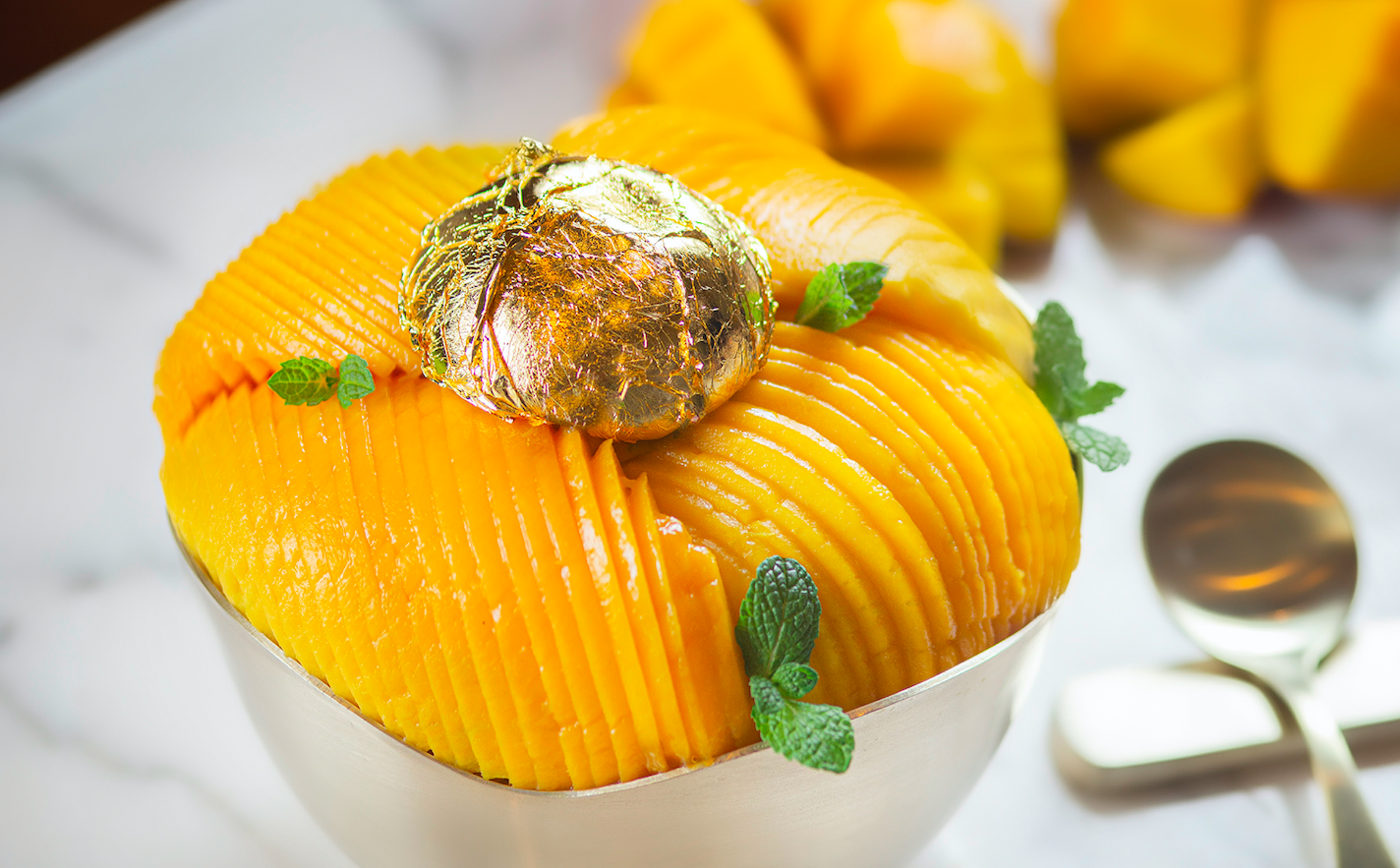Mounds of juicy golden mango slices top fine shavings of frozen milk. Edible gold leaf disguising a ball of "thick mint-mango sauce made with techniques of molecular gastronomy" crowns it all. In case that weren't sumptuous enough, mango sorbet, mango sauce and even mango pudding accompany the set up.
One might say this over-the-top affair is South Korea's most-talked-about delicacy of the season. Each summer the country's businesses compete to offer the trendiest takes on bingsu 빙수, an old-fashioned desert that normally combines ice shavings with sweetened red-bean paste; and the bar for what constitutes quality—and the attendant price tag—soars.
The Four Seasons Seoul's mango version, described above, costs a a whopping 96,000 won (73 dollars) and is known to be the most expensive in the whole country.
